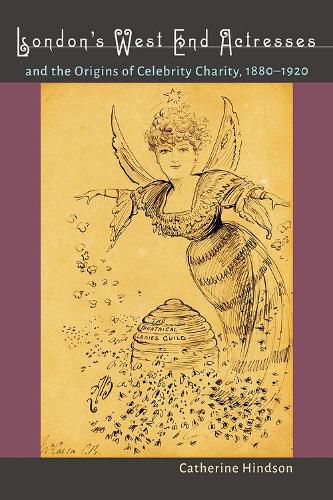Readings Newsletter
Become a Readings Member to make your shopping experience even easier.
Sign in or sign up for free!
You’re not far away from qualifying for FREE standard shipping within Australia
You’ve qualified for FREE standard shipping within Australia
The cart is loading…






Today’s celebrity charity work has deep historical roots. In the 1880s and 1890s, the stars of fin-de-siecle London’s fashionable stage culture-particularly the women-transformed theatre’s connection with fundraising. They refreshed, remolded, and reenergized celebrity charity work at a time when organized benevolence and women’s public roles were also being transformed. In the process, actresses established a model and set of practices that persist today among the stars of both London’s West End and Hollywood.
In the late nineteenth century, theatre’s fundraising for charitable causes shifted from male-dominated and private to femaledirectedand public. Although elite women had long been involved in such enterprises, they took on more authority in this period. At the same time, regular, high-profile public charity events became more important and much more visible than private philanthropy. Actresses became key figures in making the growing number of large and heavily publicized fundraisers successful. By 1920, the attitude was Get an actress first. If you can’t get an actress, then get a duchess. Actresses’ star power, their ability to orchestrate large events quickly, and their skill at performing a kind of genteel extortion made them essential to this model of charity. Actresses also benefited from this new role. Taking a prominent, public, offstage position was crucial in making them, individually and collectively, respectable professionals.
Author Catherine Hindson reveals this history by examining the major types of charity events at the turn of the twentieth century, including fundraising matinees, charity bazaars and costume parties, theatrical tea and garden parties, and benefit performances. Her study concludes with a look at the involvement of actresses in raising funds for British soldiers serving in the Anglo-Boer War and the First World War.
$9.00 standard shipping within Australia
FREE standard shipping within Australia for orders over $100.00
Express & International shipping calculated at checkout
Today’s celebrity charity work has deep historical roots. In the 1880s and 1890s, the stars of fin-de-siecle London’s fashionable stage culture-particularly the women-transformed theatre’s connection with fundraising. They refreshed, remolded, and reenergized celebrity charity work at a time when organized benevolence and women’s public roles were also being transformed. In the process, actresses established a model and set of practices that persist today among the stars of both London’s West End and Hollywood.
In the late nineteenth century, theatre’s fundraising for charitable causes shifted from male-dominated and private to femaledirectedand public. Although elite women had long been involved in such enterprises, they took on more authority in this period. At the same time, regular, high-profile public charity events became more important and much more visible than private philanthropy. Actresses became key figures in making the growing number of large and heavily publicized fundraisers successful. By 1920, the attitude was Get an actress first. If you can’t get an actress, then get a duchess. Actresses’ star power, their ability to orchestrate large events quickly, and their skill at performing a kind of genteel extortion made them essential to this model of charity. Actresses also benefited from this new role. Taking a prominent, public, offstage position was crucial in making them, individually and collectively, respectable professionals.
Author Catherine Hindson reveals this history by examining the major types of charity events at the turn of the twentieth century, including fundraising matinees, charity bazaars and costume parties, theatrical tea and garden parties, and benefit performances. Her study concludes with a look at the involvement of actresses in raising funds for British soldiers serving in the Anglo-Boer War and the First World War.